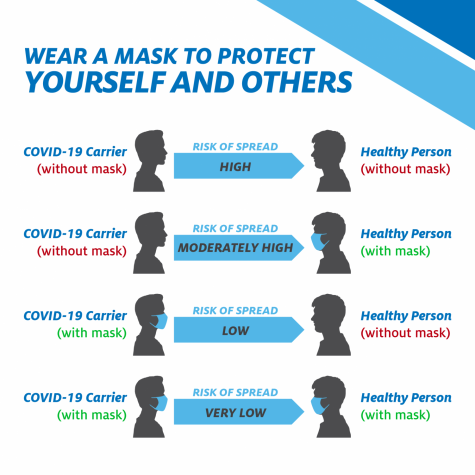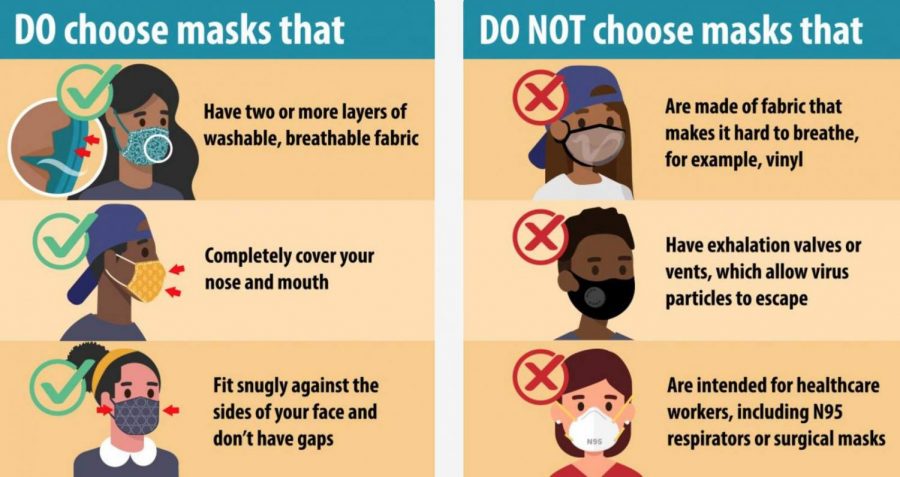What Type of Mask is Best?
We all want to stay safe and make sure we don’t contract the virus, but we don’t always know what the best thing to do to keep ourselves and our loved ones safe. We are all required to wear masks to school and other establishments, but with all of the options out there it’s hard to know which one is the best option.
When wearing your mask or other face-covering, you need to cover your mouth and nose and make sure it is tight enough so that it won’t fall off, but still loose enough to be comfortable. Many people think that being young or not immunosuppressed means they do not need to wear a mask. However, this is simply not the case, typical cloth face masks do more to block your germs from spreading to other people. They do this by blocking the droplets that are normally released into the air when the wearer talks, coughs, or sneezes. This is one of the main reasons people need to wear masks or face coverings when we are out in public, not to protect us but to stop our germs from spreading to others and infecting them.
First, we will discuss the least effective form of face coverings: bandanas, neck gaiters, and masks with valves. These options seem appealing because they are usually lightweight, but they do very little to protect us from spreading or taking in germs. Bandanas, while often picked for their style and comfort, aren’t a practical or effective choice because they are open on the bottom. This is an issue because it allows more droplets to escape and possibly infect someone else than a standard face mask would. Neck gaiters are tubes of very thin and stretchy fabric that cover the mouth and nose. This may seem like a good option but the thinness proves to be problematic in terms of letting germs escape. Thicker masks like fabric masks with more layers and surgical masks block more germs from getting into the air. Because neck gaiters are made up of only one thin knit layer, they don’t do as much to block germs from getting into the air and you are more likely to spread the virus. Masks with valves are very similar to standard fabric masks but they have a valve on the side that is meant to filter the air that goes into the mask. These masks are meant for construction work and other activities where the person wearing the mask needs to filter the air they are breathing in from dust or chemicals. Masks with vents are good for filtering the air we breathe in but not for preventing the spread of germs.

On the other end of the spectrum, there are impractical options that protect the wearer very well when used correctly but often are worn wrong, making them ineffective. One example of this are face shields. Face shields look like they will protect very well because of their size and thick plastic layer, but they will not protect you from smaller particles. They are intended to be used by dentists and people in the medical field while also wearing a medical-grade mask to block large particles that could spread COVID-19 from hitting their faces. Another thing to look out for are masks that appear to be thick and protect well but have valves. They may look like good options but because of the valves in them, they let droplets out which will not help prevent the spread of COVID-19. Some of the more protective options that stores may sell, like N95 respirators, should be reserved for healthcare workers because of their low supply. Your best option is to wear a fabric mask as the CDC recommends.
Sarah Conroy (She/Her) is a Senior at Shaker High School and this is her first year as a the Lead Writer fourth year with The Bison as a member of the...


